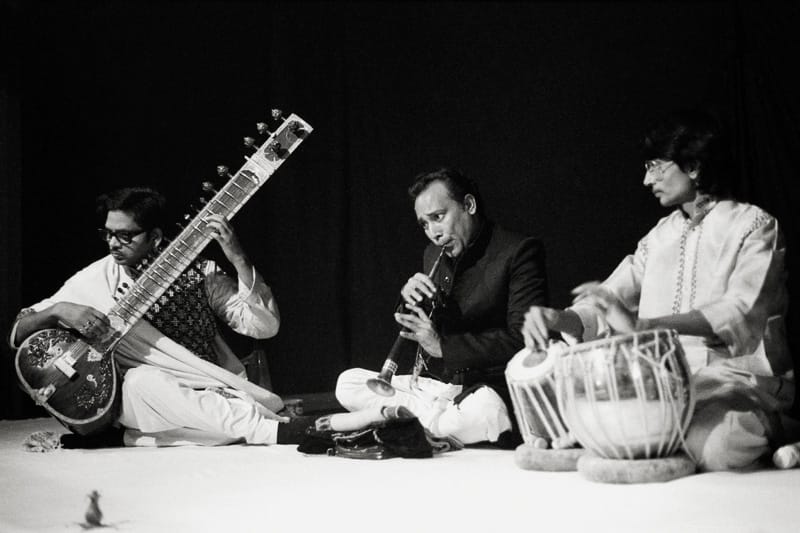Ragas in Literature: Tracing the Influence of Indian Classical Music in Poetry and Prose

Indian classical music, with its rich fabric of intricate melodies and rhythmic patterns, has long been revered as a profound art form. Beyond its auditory allure, Indian classical music has transcended the confines of its sonic realm, influencing various facets of culture, including literature. This article delves into the intricate relationship between Indian classical music, particularly its distinctive ragas, and the world of poetry and prose. We will explore the historical significance of this interplay, analyzing how the emotive power of ragas has found resonance in the written word.
The Essence of Ragas
Before we embark on our exploration of the intersection between Indian classical music and literature, it is imperative to understand the essence of ragas. In the Indian classical tradition, ragas are melodic frameworks, each evoking a specific mood or emotion. These ragas are not merely musical scales; they are repositories of emotional landscapes, capable of conveying a spectrum of feelings, from joy and ecstasy to melancholy and introspection.
The rhythmic cycles (taals) and the intricate improvisations within a raga allow musicians to express the nuances of human experience. This emotive quality of ragas becomes a potent force when transposed onto the canvas of literature.
Historical Roots
The roots of the relationship between Indian classical music and literature can be traced back to ancient times. The Natya Shastra, an ancient Indian treatise on performing arts, dating back to the 2nd century BCE, recognized the interconnectedness of music and literature. The concept of “Rasa,” which refers to the emotional essence conveyed through artistic expression, formed the bedrock of both music and literature in classical Indian traditions.
Poetry and Ragas
One of the most evident intersections between Indian classical music and literature lies in poetry. Poets, enamored by the emotive depth of ragas, have often sought inspiration from the melodic strains of classical music to infuse their verses with heightened emotional resonance.
Take, for instance, the romantic allure of the raga Yaman. With its soothing and evocative notes, Yaman has been a muse for poets exploring themes of love and longing. The intricate patterns of the raga, often associated with the twilight hour, find echoes in verses that capture the delicate nuances of romantic relationships and the yearning for a beloved.
In contrast, the profound and somber raga Bhairavi has inspired poets to delve into themes of separation, loss, and introspection. The deep, introspective notes of Bhairavi often find a parallel in verses that explore the existential questions of life, mortality, and the ephemeral nature of human existence.
Prose and the Art of Narration
While poetry seamlessly integrates with the emotive contours of ragas, prose too has been deeply influenced by the structural and thematic elements of Indian classical music. The rhythmic precision inherent in ragas finds resonance in the cadence of prose, influencing the pacing and tonality of narrative storytelling.
In the realm of Indian classical literature, the concept of “Layakari” or rhythmic play is mirrored in the intricate storytelling techniques employed by authors. The ebb and flow of a narrative, much like the progression of a raga, can evoke a range of emotions, building tension or offering moments of reprieve.
The use of “Bols” or mnemonic syllables in classical music finds a parallel in the carefully chosen words and phrases employed by writers to create a distinctive literary rhythm. This rhythmic interplay contributes to the immersive experience of the reader, akin to the mesmerizing effect of a well-rendered raga.
Modern Manifestations
The influence of Indian classical music on literature is not confined to the annals of history; it continues to shape the work of contemporary writers. In the modern era, authors have embraced the evocative power of ragas to infuse their narratives with a sensory richness that transcends the written word.
Prominent writers such as Vikram Seth, Arundhati Roy, and Amitav Ghosh have incorporated elements of Indian classical music into their works. Whether it be through the explicit mention of ragas in the narrative or the subtle infusion of musical motifs into the prose, these authors pay homage to the enduring symbiosis between literature and music.
The Intersection of Sacred and Secular
Beyond the realms of love, loss, and introspection, Indian classical music has also found resonance in the exploration of the sacred and the divine within literature. Ragas associated with devotional music, such as Bhairav and Todi, have inspired poets to delve into the spiritual dimensions of human existence.
The Bhakti and Sufi traditions, which celebrate the union of the soul with the divine, have often drawn from the emotional reservoir of ragas to articulate the ineffable. The devotional fervor embedded in these ragas becomes a vehicle for poets to express the sublime and the transcendent, transcending the limitations of language.
Conclusion
In the intricate dance between sound and language, Indian classical music and literature find a harmonious union that transcends the boundaries of artistic expression. The ragas, with their emotive power, serve as a bridge between the auditory and literary realms, inspiring poets and writers across generations.
As we traverse the historical landscape and delve into the modern manifestations of this interplay, it becomes evident that the influence of Indian classical music on literature is not a fleeting phenomenon but a timeless tradition. The melodic strains of ragas continue to echo through the verses and prose of poets and authors, creating a symphony that resonates with the collective soul of a culture deeply rooted in artistic expression. In this synthesis of ragas and words, we find a testament to the enduring power of human creativity and the boundless possibilities that arise when the realms of music and literature converge.





